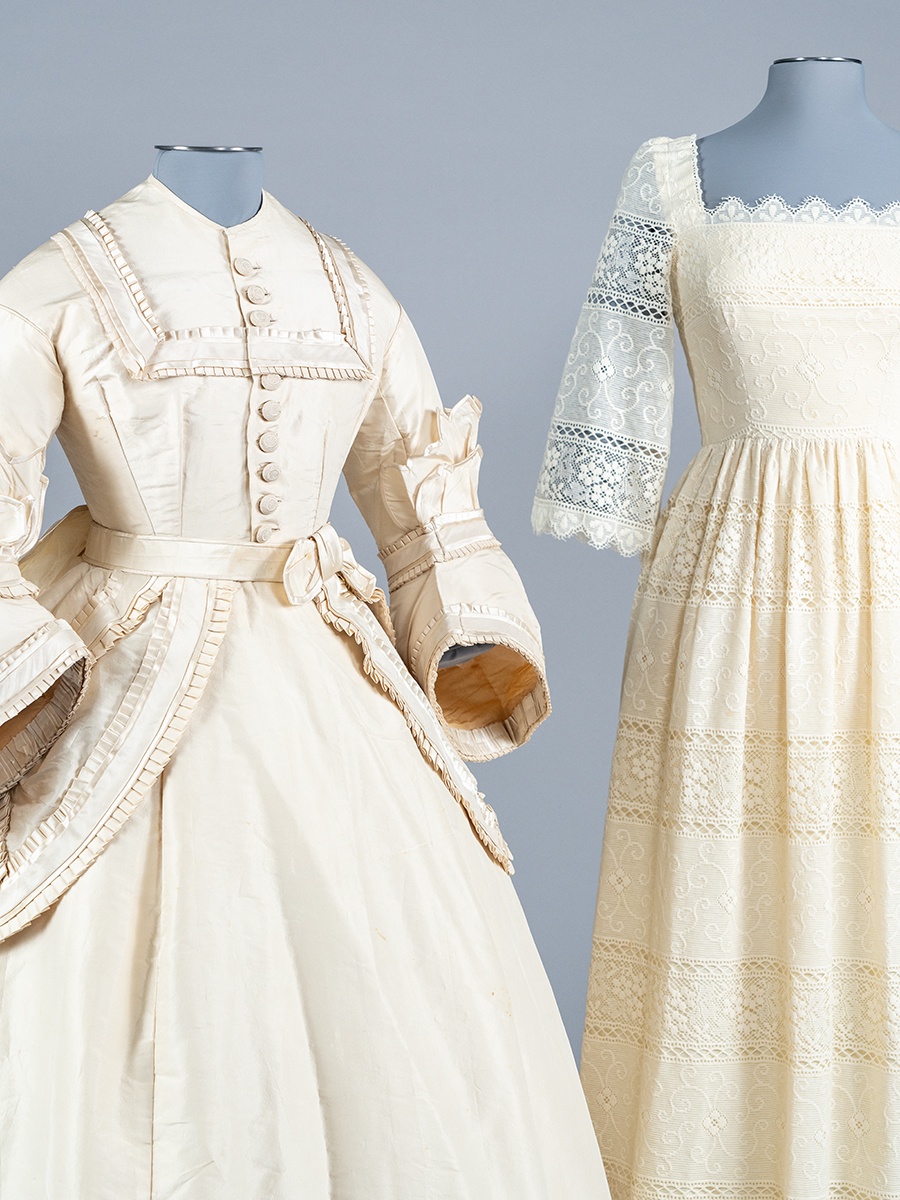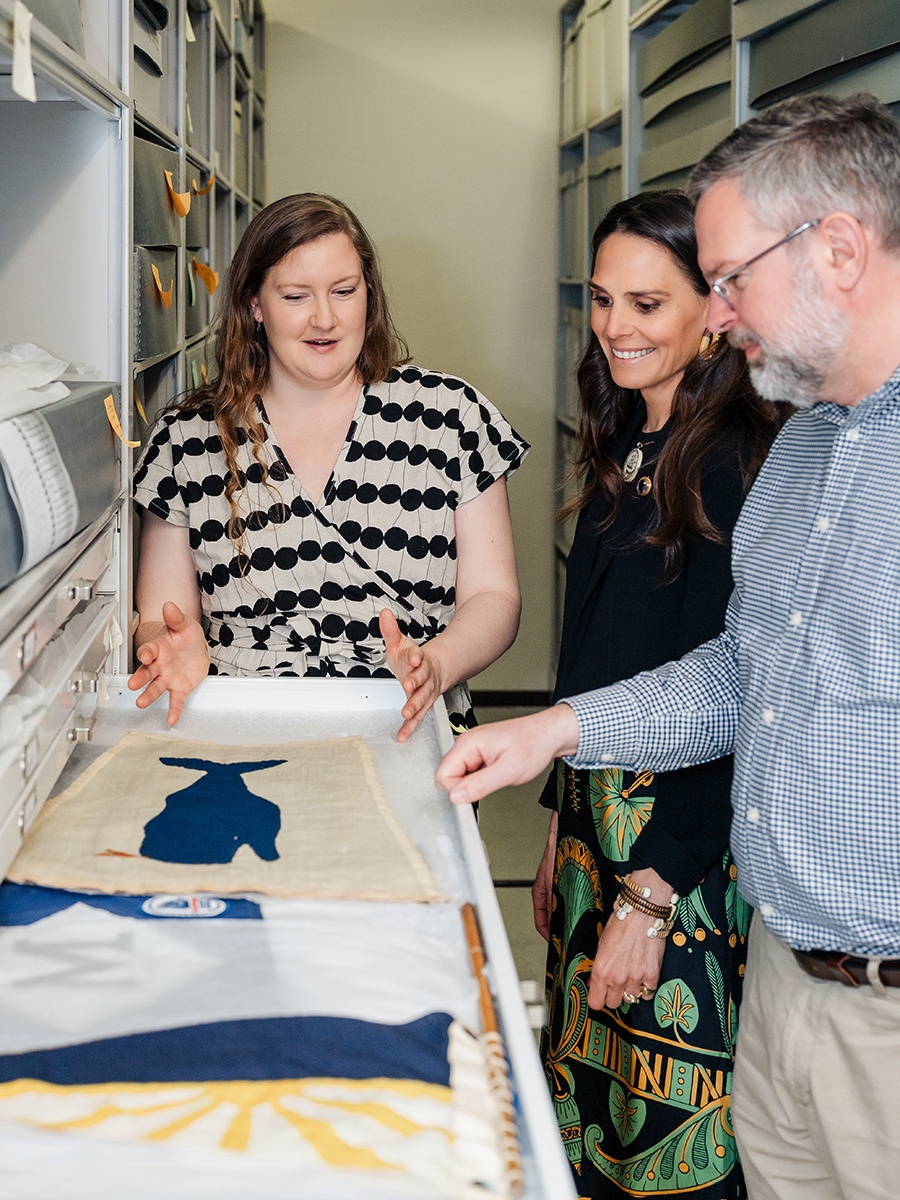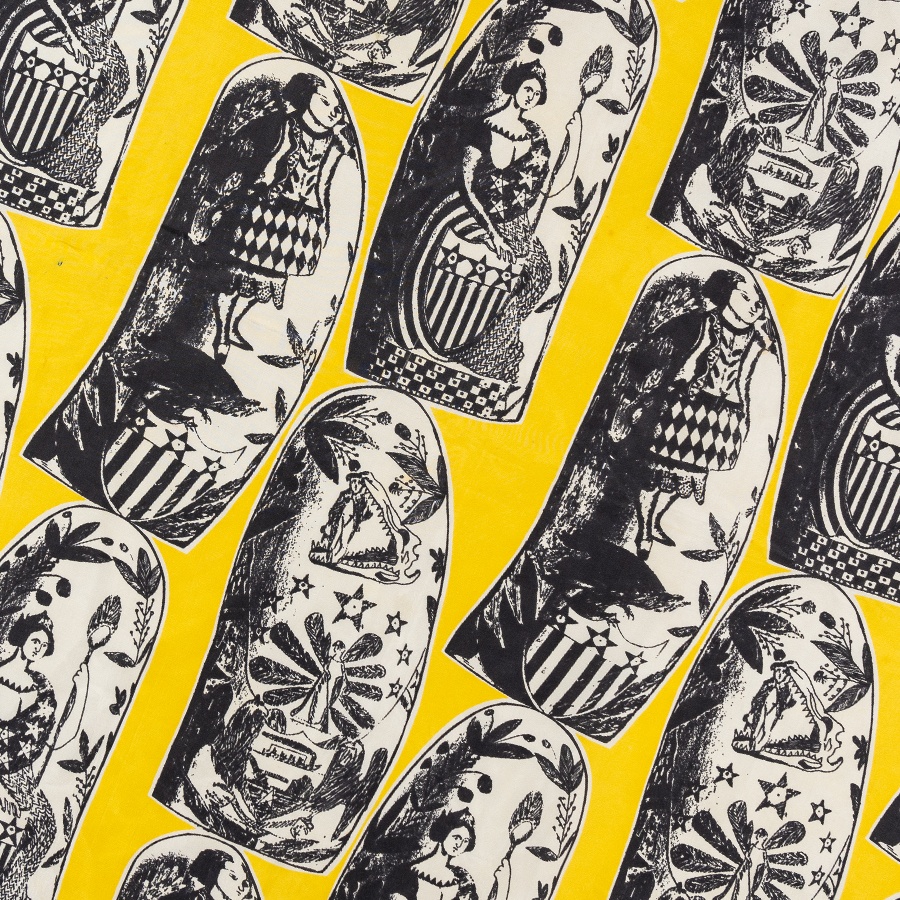Nantucket’s Textile Legacy Unfolds in New Exhibition
A new Nantucket Historical Association exhibition, “Behind the Seams” quilts together vibrant tales of the island’s past.

Photo courtesy of the Nantucket Historical Association
This article is from the summer 2025 issue of Boston Home. Sign up here to receive a subscription.
Fashion is not just a reflection of one individual but rather a broader tale of community, necessity, commerce, socioeconomic status, group identity, political movements, and, of course, trends. So how did one tiny island 30 miles off Cape Cod become so significant—and so synonymous with clothing culture, textiles, and weaving techniques? A fabulous new exhibition on the island of Nantucket threads it all together for us.
Shaped by the whispers of the wind and the pull of the tide, Nantucket stands as a timeless silhouette, as steeped in history as it is bathed in charm. Measuring only 14 miles long and 3.5 miles wide—a mere blip on a zoomed-out map of the world—it is indisputably grand in its global impact. Boasting stories from tribal settlements, perilous explorations, and whaling adventures as far as the Eastern Hemisphere; a sought-after artisan’s retreat; and what we now know as one of the nation’s most coveted luxury escapes, the island holds a material legacy that serves as a time capsule—one that speaks to a historic vessel of adaptation.
Over the last five centuries, these material items have been collected and protected. Now, for the first time, the Nantucket Historical Association is pulling a diverse collection of clothing and textiles from its archives for public display for the much-anticipated exhibition, “Behind the Seams: Clothing and Textiles on Nantucket.”

The exhibition’s guest curator, Jennifer Nieling; Marla Mullen Sanford; and NHA chief curator Michael Harrison examine a flag depicting a blue sperm whale from the 1920s created by Mary Augusta Wilson. / Photo by Zofia & Co.
Nantucket’s story began thousands of years ago, when it was discovered and settled by the Wampanoag tribe. Living primarily off the land, the Native Americans created a beautiful, natural existence. In the 17th century, shortly after being discovered by an Englishman, legend has it that the island was purchased for 30 pounds and two beaver hats—marking its first stamp as a fashion haven. Over the next two centuries, the whaling industry took a stronghold on the island, making Nantucket one of the most important ports in North America. Clothing and material from this period—the way it was dyed, stitched, patched, and quilted—paint a vivid portrayal of the seafaring community’s way of life.
While Nantucketers relied mostly on imports for their textiles, during the 17th century they began to dip their toes into locally grown wool, flax, and—for a brief time—silk production for clothing and other utilitarian needs. Sheep pastures and specialized workrooms began popping up on the island, and newly accessible materials from whaling, such as baleen and ivory, were used to create fashionable items such as women’s corset stays and carved buttons. Signs of fabric extensions and alterations are featured in the exhibition, reminding us how valuable textiles and clothing were in this period; garments were made to last, and often resized and repurposed multiple times to last a generation.
By the 1840s, the island’s whaling industry was in decline. Between this economic shift, the Industrial Revolution, and easier access to Nantucket from the mainland, clothing reflected a new way of life. Sewing machines were introduced, and fast fashion was on the rise.
During the 1960s, islanders revived historical sewing and quilting techniques, and new businesses evolved as a result, introducing fashion trends that are still considered “classic” Nantucket. In 1968, master weavers Andy Oates and his life and business partner, Bill Euler, opened Nantucket Looms, where they handcrafted casual and classy clothing, beautiful throws, and eventually the coveted CPO jacket. Made from Nantucket Looms tweed, Liberty of London–printed cotton lining, and ivory buttons as a nod to the whaling era, the jacket became a true “if you know, you know” iconic item.

Another piece created by the Cloth Company of Nantucket, this silk scarf is screenprinted with a design featuring three different scrimshawed whale teeth in black and white on a yellow background. The imagery is based on scrimshaw in the Nantucket Historical Association’s collection. / Photo courtesy of Nantucket Historical Association
Midcentury Manhattan textile designers Leslie and D.D. Tillett were known for the vibrant handscreened fabrics they created for clients including Jacqueline Kennedy Onassis and Bunny Mellon. Shortly after the Looms opened, the Tilletts debuted the Cloth Company of Nantucket in collaboration with Oates, designing textiles based on the island’s history and landscape.
By the 1980s and 90s, Nantucket had boomed and with it came looks, styles, and colors that resonated with a “preppy” way of life. Owning anything branded “Nantucket” was like being a member of an exclusive club. The now-iconic Nantucket Reds pants, for one, are globally recognized for their faded, salmon-pink color.
Getting a private sneak preview of these historical items reminded me of how far the island has come but also how classic styles really are cyclical. Several pieces of clothing looked like they could walk the runway today, and many of the fabrics are similar to those used in modern-day residential design. Nantucket has ridden the waves of changing tides, leaving in its wake a story of resilience and artistry.
Above all else, one thing is certain about this year-round community: The island endures as a magical respite for many and is earmarked as a place of great inspiration and trendsetting.
“Behind the Seams: Clothing and Textiles on Nantucket” is open through November 2 at the Nantucket Whaling Museum. For more details, visit nha.org.
First published in the print edition of Boston Home’s Summer 2025 issue, with the headline, “New Heights.”


